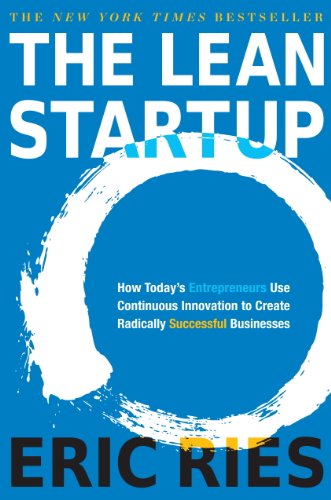

This article is an excerpt from the Shortform summary of "The Lean Startup" by Eric Ries. Shortform has the world's best summaries of books you should be reading.
Like this article? Sign up for a free trial here .
What is a growth engine in Lean Startup? How does it power your growth so you can build the most valuable and impactful company possible?
Learn about the three growth engines here: the Sticky Growth Engine, the Viral Growth Engine, and the Paid Growth Engine.
Intro to Startup Growth Engines
A startup is a new company designed to grow. If you’re ambitious about your startup, you want more customers and more revenue sooner. When growth stagnates, it indicates a problem about your growth strategy.
Ideally, you strive for sustainable growth – wherein new customers come from the actions of past customers. This contrasts with unsustainable one-time activities, like a publicity stunt or Super Bowl ad.
How exactly your business grows depends on your industry and product. Eric defines three major engines of growth: Sticky, Viral, and Paid. These aren’t mutually exclusive, and often businesses will use all three at once. But it’s likely one of these will dominate the others.
In this part of The Lean Startup summary, we’ll cover each engine of growth, the key metrics to care about, and how to improve the engine’s performance.
The Sticky Engine of Growth
The Sticky engine relies on retention of customers to grow. When you acquire the user, you want the user to stick around as much as possible.
As a metaphor, think of a leaky bucket with holes. When you pour water in, water flows out the holes. If you fill the bucket with water at the same rate it’s exiting the holes, the water level stays steady – no growth. But if you plug up the holes, the funnel will start filling up. This is growth.
The sticky growth engine is especially important in a few types of businesses:
- In a network or marketplace of connected users. Here, the value grows exponentially with the number of users on it (as per Metcalfe’s law)
- Social networks like Facebook: if Facebook keep new users on and get existing users to post more, their friends will find Facebook overall more valuable.
- Marketplaces like Uber: more riders means more rides for drivers and more earnings. This kicks off a virtuous cycle where more earnings recruit more drivers, which improves the rider experience and recruits more riders
- When your customer keeps paying you
- Merchants like Amazon: retaining users means they continue to buy from the merchant
- Subscription companies like Netflix or Salesforce – regular subscriptions means the longer a customer stays engaged, the larger lifetime value you get, the more value they get from your service, and the harder it is to leave
Sticky Growth Engine Metrics to care about:
- Churn rate is the key metric to care about. This is defined as the fraction of customers who fail to remain engaged with the product in a certain time period.
- Growth rate: defined as new customer acquisition – churn rate.
- For example, you may grow by 50% per month, but churn 30% of users per month. On a base of 100 customers, you gain 50 users but lose 30. You end the month with 120 customers for net 20% growth. If you keep the same growth rate, your userbase will compound over time.
- Engagement: can be defined as the core engagement action you care about, like logins per week, time used per week, messages sent per month, etc.
- AVOID total number of customers. This will always increase, but if you’re churning customers, your revenue will flatline.
How to improve sticky growth engine:
- Improve the product for existing customers to make it more engaging
- Send reminders about activity and special promotions
- Facebook pings you on major activities – someone has added you as a friend, tagged you in a photo, has a birthday today
- For users who have left, create reminders and incentives to return
- Subscription businesses like Netflix may offer discounts to return after you’ve unsubscribed
How not to improve sticky growth engine:
- Do not invest in sales and marketing if you’re not retaining users. If your funnel is leaky, you’ll be losing customers as quickly as you’re gaining them. Pouring in more users will be very expensive and lead to zero net growth. Fix the leak first.
The Viral Engine of Growth
The viral growth engine relies on your existing users to bring in more users directly. Picture exponential growth – one user brings on two users. Each of those users brings on two more users. Like nuclear fission, this leads to explosive growth.
Viral growth is distinct from plain word-of-mouth – in viral growth, the referral mechanism is a necessary consequence of using the product. A few examples:
- 1990’s email service Hotmail added a line at the end of each email sent: “P.S. Get your free e-mail at Hotmail.” Each new email sent was free advertising for Hotmail, and getting more users onboard led to even more emails sent out.
- PayPal let users send money to people without Paypal accounts. The emails said something like, “John has sent you $20!” Who’s not going to sign up to claim their money?
Viral Growth Engine Metrics to care about:
- Viral coefficient: the number of new customers who join from invites for a single customer. For example a coefficient of 1.2 means that every new user who joins pulls in 1.2 new users on average.
- This can be broken down further: viral coefficient = [# of invites per user] * [% of users who sign up from invites]
- For example, if 1 user sends out 5 invites on average, and 16% of users sign up from invites, then the viral coefficient is 5 * 0.16 = 0.8
- A viral coefficient above 1 is viral. 1 is the magic number.
- If your viral factor is below 1, the invites peter out. For example, if you have a viral factor of 0.8 and start with 100 users, these 100 users recruit another 80, who recruit 64, who then recruit 51, and so forth as it sizzles down to 0. You do get a bunch of new users, but it won’t explode virally.
- But if every user invites more than 1 extra person, then it leads to exponential growth. With a viral factor of 1.1 and starting with 100 users, these 100 recruit another 110, who recruit 121, then 133, and so on.
Here’s what viral growth looks like depending on what your viral factor is:

How to improve viral growth engine:
- Increase # of invites sent per user. Build in more referral mechanisms and incentivize sending more invites per user.
- Dropbox gave early users free storage space for each new user referred
- LinkedIn scrapes your email contacts and sends invites to people who haven’t joined (an annoyingly effective feature)
- Improving stickiness and retention also improves # of invites, since more time on your product means more opportunities to invite users
- Increase the signup rate from invites.
- Lower the friction to signing up for your service.
- Make your onboarding super simple so users can see the value from your service quickly.
- Social networks like Facebook and Snapchat tend not to charge users who sign up because it would slow user growth
- Add incentives for signing up from an invite link.
- Many services like Uber give bonuses for both the inviter and the invitee for signing up.
- Lower the friction to signing up for your service.
How not to improve viral growth engine:
- Do not add more users to a non-viral process. If your process isn’t viral, paying for more users won’t make it go viral
- There’s an exception if your service requires a critical mass to jumpstart viral growth. But this rarely is required, so don’t deceive yourself.
The Paid Engine of Growth
This is a relatively straightforward engine of growth. Through ads or sales, you pay to acquire a user. If the user gives you more money than it cost to acquire the user, then you can use the profits to pay for more users, which gives you more profits.
Metrics to care about…
———End of Preview———

Like what you just read? Read the rest of the world's best summary of "The Lean Startup" at Shortform . Learn the book's critical concepts in 20 minutes or less .
Here's what you'll find in our full The Lean Startup summary :
- How to create a winning Minimum Viable Product
- How to understand how your startup will grow
- The critical metrics you need to track to make sure your startup is thriving





